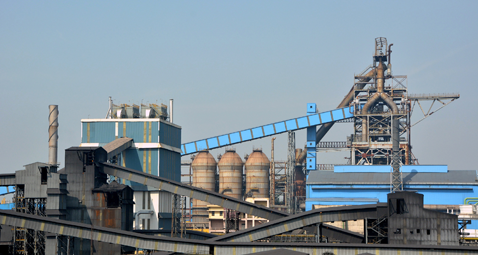
Steel Authority of India Ltd, through its IISCO Steel Plant, took a step forward in promoting “green construction” overseas. The IISCO Steel Plant, one of SAIL’s integrated steel plants, recently exported its first consignment of granulated blast furnace slag to Bhutan. The consignment weighing 4,000 tonnes was dispatched to Bhutan in 59 rail wagons. This slag will be gainfully used by cement makers in Bhutan. IISCO Steel Plant already supplies slag to local cement companies like ACC Ltd and Burnpur Cement Ltd.
The granulated slag was produced by IISCO Plant’s new blast furnace “Kalyani,” which is also India’s biggest blast furnace with a useful volume of 4,160 cubic metres. Installed by Posco of South Korea, the Kalyani blast furnace was “blown in” on November 30, 2014, and has been in operation ever since. It overtook the blast furnace of SAIL’s Rourkela Steel Plant in Odisha with useful volume of 4,060 cubic metres, to emerge as India’s largest blast furnace. The Kalyani furnace, with a production output of 7,700 tonnes of hot metal per day, generates 40,000 tonnes of granulated slag on a monthly basis.
Ground Granulated Blast Furnace Slag (GGBS) is obtained during the steel making process, when the slag is quenched (rapidly cooled) with the help of water, to form granules. Cement produced by using GGBS is considered “green” because it uses recycled material. Recycling helps in conserving resources and forestalls pollution that would be caused to produce “virgin” material. GGBS is therefore considered as a green material and can contribute greatly to sustainable construction. GGBS-based cement has better load-bearing properties and is hence the preferred material for high-rise building, marine applications, effluent treatment plants, etc.











